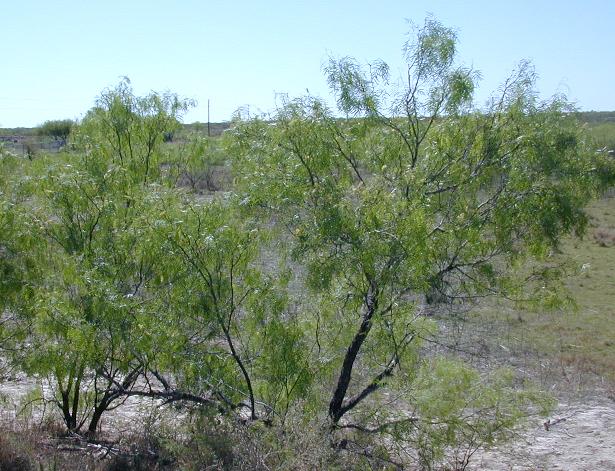| Honey mesquite is a thorny tree ten to thirty feet in height. It invades all soils of the South Texas Plains and the Edwards Plateau. The leaves are bipinnate with two pairs of pinnae and 12 to 20 leaflets. The yellowish green flowers are found on small stalks and bloom from April to September. The seed pods are an important source of food for insects, livestock, deer, birds and small mammals. However, the seeds can be toxic in large quantities. Honey mesquite also provides cover for birds and small mammals. Native Americans used the seeds for bread and alcohol. A black dye or a cement for pottery can be generated from mesquite and the gum from bark was eaten as candy or dissolved in water for dysentery, wound or scratchy throat treatment. The wood is good for furniture, firewood, flooring or posts. It is insect and disease tolerant and can be used as an ornamental shrub or in landscaping designs. Mesquite can be managed using various herbicides. Mesquite beans can be toxic if a primary food source for cattle and goats. Symptoms of disease include loss of appetite, rapid weight loss, bulging eyes, and death. |
